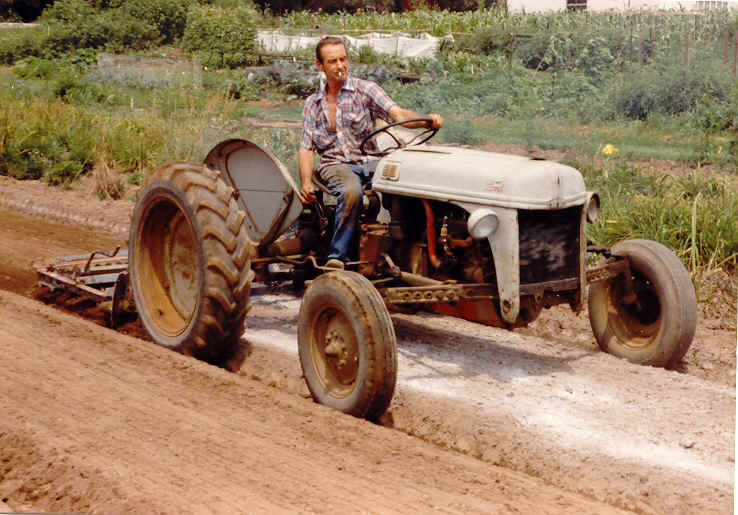


Perennials are what we started out growing and this is probably the largest area of our inventory. We grow many newer varieties and also tried and true varieties which have been around for a while. Times have changed since we began our field growing and who could foresee the changes that have occurred. One of the biggest factors to effect our business in the last 10 years is the huge population of white-tailed deer in Union County and throughout New Jersey. Getting rough to produce any vegetables in the field any more. We no longer grow pansies and perennials in the field, now growing in the greenhouse and containers. We have cut out many varieties of daylilies as theses are preferred by many deer. We are seeing a lot more damage on hosta, one of our specialties and and striving to identify varieties that are more resistant to browsing by deer. Click here to find out the ones we have found best for our area. We grow and other perennials. We also grow annuals, including the ProvenWinners and other specialty annuals, and tender perennials, which are treated like annuals. We grow a nice selection of herbs and vegetables plants. We also grow a diverse variety of flowering shrubs, clematis and other vines, and broad-leafed evergreens, like azaleas, rhododendrons, and hollies. Our list is constantly changing and rather than list everything we grow, I will put up some of the guideline sheets we use in our store. Please enjoy and any questions, please call 908-2330873 or mail to Bob@GardenNJ.com
We try to use the following guides to select which plants we are going to grow: 1) Hardiness- Plants are investments for me. I try not to invest in things that are marginally hardy and may die over a winter or summer.
2) Long bloom or long season of attractiveness- I try to grow plants that offer the greatest appeal for the longest time. The longer a plant is attractive, the more value it has for me. These will also look good in your garden for longer periods of time.
3) Multiple seasons of attractiveness- This goes with the above. If a plant looks good in bloom and also has showy berries or fall color or winter effect, it gains a higher value to me.
4) Disease or insect resistance- I donít like to spray chemicals. I want them in my life as little as possible and I don't like having you use them either. If there are varieties which have a natural resistance to problems, I will go with them for my health and yours.
5) Easy to grow- I like to grow plants that show a lot of vigor and grow without a lot of care and maintenance. Plants that demand a lot of care and attention are not a high priority to me. I won't neglect them but I also prefer plants which are well behaved. Strong vigor is good but when you have to spend a day controlling a plant, that takes the fun out of it.
6) Nature friendly- I am in this business because I love most things in nature. If a plant is able to attract butterflies, birds, or benefits nature in some other way, it gets more consideration and is of a much higher value.
|
We
encourage all to use the following:
Elements of natural design( American Nurseryman 1/1/96) 1) Cultivate in your customers an appreciation of the beauty in nature. 2) Minimize disturbance of existing native growth. 3) Decide how closely your design will emulate the native landscape. 4) Allocate the location of woodlands, open spaces, and transitional areas. 5) Base your design on Native plant communities found in similar conditions in the surrounding areas. 6) Use and plan for natural processes of change to modify the landscape. 7) Occupy all the spaces. 8) Increase groundwater recharge by preserving rainwater on site. 9) Employ alternatives to high maintenance lawns. 10) Exclude invasive exotic plants in the native landscape.
|